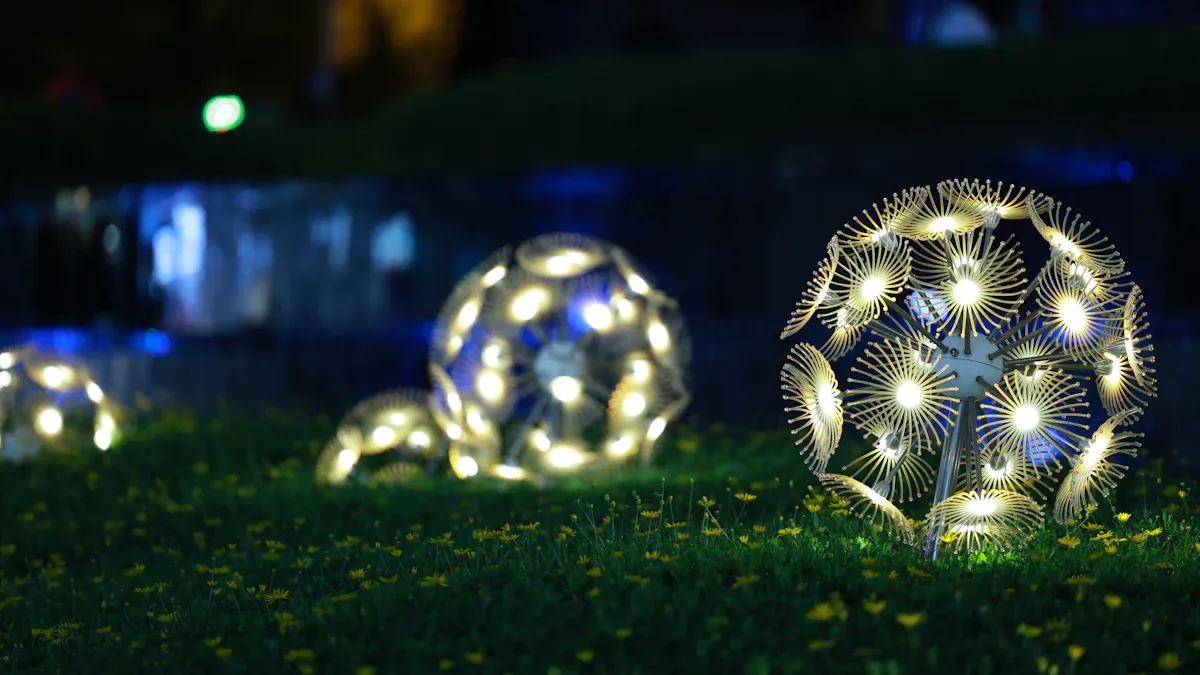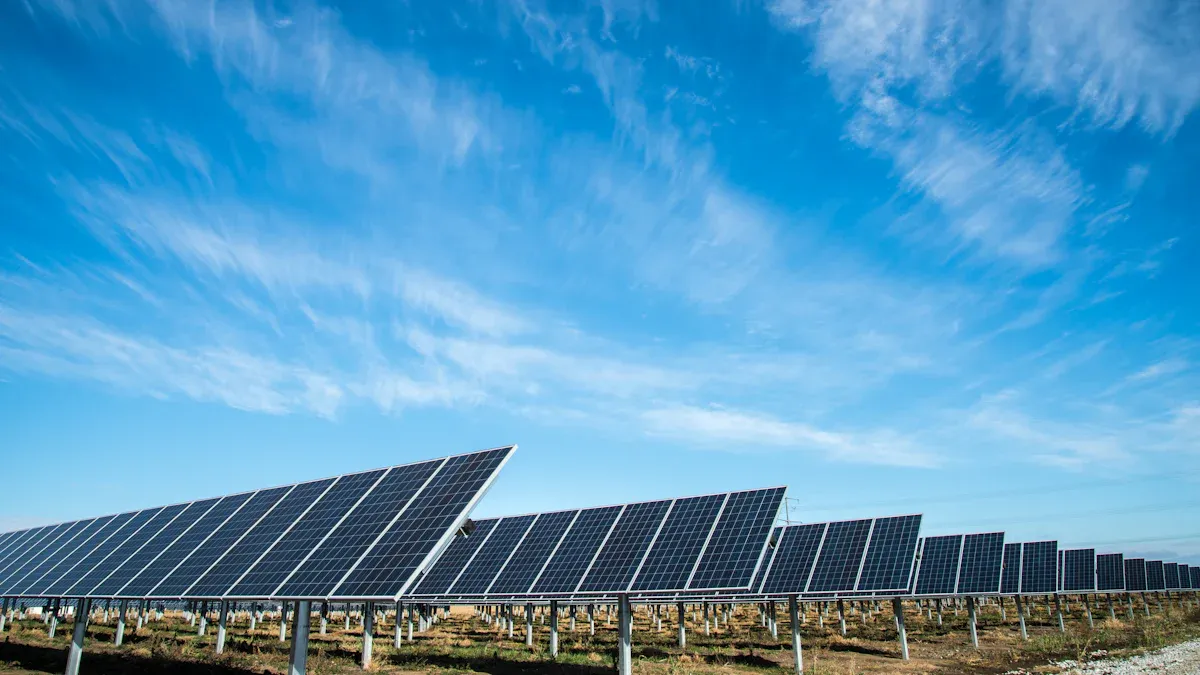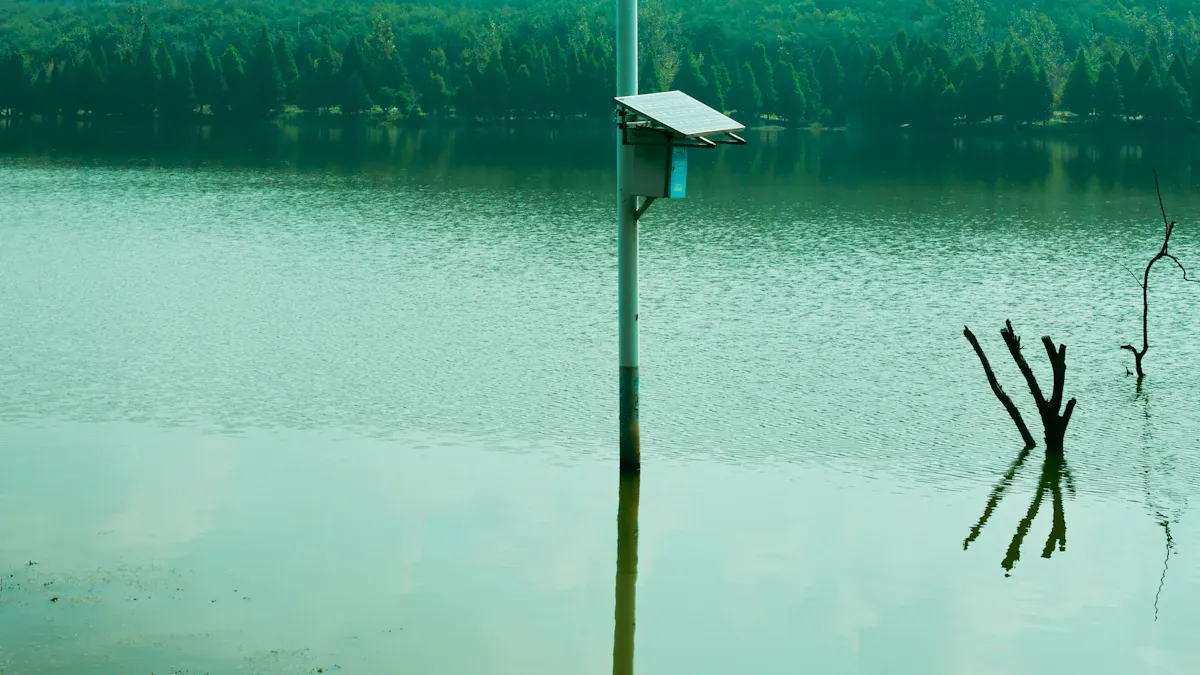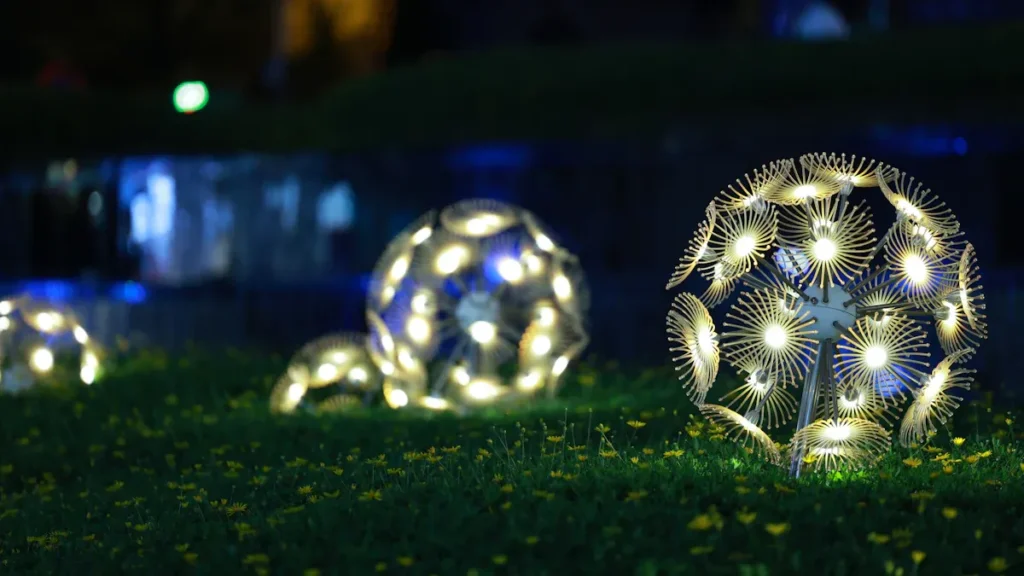
You might notice solar garden lights do not last as long as you expect. Many people see a finite lifespan for these lights because of a few main reasons:
The rechargeable batteries inside often wear out, which leads to dim or non-working lights.
If your garden lights do not get enough sunlight, they cannot charge well and may not shine brightly.
Harsh weather, like heavy rain or extreme heat, can damage the parts and shorten their longevity.
Some lights use low-quality materials and LEDs, so they break down faster.
Most of these problems are common. You can fix many of them with simple steps.
Key Takeaways
Rechargeable batteries are very important for solar garden lights. Pick good batteries like lithium-ion or NiMH for longer use and better results.
Where you put your solar lights is important! Put them where they get direct sunlight for 6-8 hours each day so they can charge well.
Weather can hurt solar lights. Keep them safe from rain and very hot or cold days by using waterproof types and bringing them inside during bad weather.
Taking care of your lights is important. Clean the solar panels every month and check the batteries to keep your lights bright.
Buy strong solar lights. Choose ones made from tough materials and with good waterproof ratings so they last longer.
Battery Issues in Solar Garden Lights
Battery Lifespan
You use solar garden lights to light up your yard. But the battery does not last as long as you hope. Most rechargeable batteries work for about 1 to 2 years. A new battery will shine well for a year or more. If you do not take care of it, it will not last as long. The battery’s quality matters a lot for how bright your lights stay. Good batteries like lithium-ion or NiMH last longer and save energy better. These batteries help your solar garden lights shine for more hours. They also make people happier with their lights.
Good batteries help solar lights work well for a long time.
NiMH batteries can last over two years. Lithium-ion batteries may last even longer if you care for them.
How well your solar lights work depends on the battery type and size.
If you want your solar garden lights to last, pick good batteries. This choice helps your lights work better and shine longer.
Battery Degradation
After some time, your solar lights may not shine the same. This often means the battery is getting weaker. Most solar batteries can be charged and used many times. Some can last for thousands of cycles if you use them right. But sometimes, the battery does not charge all the way. It cannot hold as much energy as before. You might see your lights flicker or turn off early. These are signs that the battery is losing power.
Tip: Look for these signs that your battery is getting weak:
The battery does not charge fully during the day.
It takes much longer to charge.
The battery life drops a lot.
The battery does not last all night after charging.
You see swelling or leaking on the battery.
The battery is over five years old and never changed.
The battery makes odd noises or smells.
If your solar lights do not work as well as before, check the battery for these signs.
Battery Replacement
If your solar garden lights are not working right, you may need a new battery. You know it is time to replace the battery if the light turns off soon after dark. The light may get dim or not turn on at all. Sometimes, the light only works for less than two hours after charging. You may also see the light flicker. If the battery looks swollen or the ends look rusty, you should get a new one.
Here are some good battery types you can use to make your lights last longer:
Battery Type | Features & Benefits |
|---|---|
2800 mAh, eco-friendly, strong, good for outdoors | |
Tenergy LiFePO4 Batteries | Cheap, handles bad weather, lasts over 1,000 cycles |
Brightown NiMH Batteries | 1300 mAh, works well for garden lights |
EBL NiMH Batteries | Light, easy to carry, stores energy well |
KINSUN NiMH Batteries | Cheap, strong, good for lights that use little power |
Pick a battery that fits your solar lights and the weather outside. Good batteries help your lights shine steady and last longer. If you change batteries before busy seasons, your garden will stay bright and you will not have sudden problems.
Sunlight and Charging Problems

Insufficient Sunlight
You may notice your solar lights do not shine as bright or last as long when they do not get enough sun. When you place solar garden lights in shaded areas, they charge less efficiently. Charging efficiency can drop to 30–70% in these spots. The battery stores less energy, so your lights run dim or turn off early. Longer charging times are needed, and the lights may only work for a few hours at night.
If you see your solar-powered lights fading quickly, check if trees, walls, or decorations block the sun. Limited sunlight means your lights cannot store enough power to last through the night.
Solar lights in shaded areas charge slower.
Illumination times get shorter with less energy stored.
Dim lights often signal poor charging.
Best Placement
You can help your solar-powered lights work better by choosing the right spot. Solar panels need direct sunlight for 6–8 hours each day. Place your lights in areas that get full sun most of the day. Avoid shaded spots caused by trees, buildings, or garden decor.
Position solar panels facing south if you live in the Northern Hemisphere.
Make sure nothing blocks the sun during peak daylight hours.
Check your garden at different times to see where the sun shines longest.
Tip: Move your solar garden lights if you notice shadows during the day. Even small changes in placement can boost charging and brightness.
Seasonal Impact
The sun changes position and strength throughout the year. In summer, longer days and stronger sunlight help solar lights charge faster and shine longer at night. Winter brings shorter days and weaker sunlight, so your solar-powered lights may not charge as well.
Daylight hours and sun intensity vary by season.
In winter, move your lights to spots with better sun exposure.
Relocate solar garden lights if they do not get enough direct sunlight.
Note: You can improve performance by adjusting placement as seasons change. Check your lights every few months to make sure they get enough sun.
Weather Effects on Solar Lights

Water Damage
Rain and moisture can cause big problems for solar lights in your garden. When water gets inside the casing, it can damage the batteries and circuit boards. You may notice your solar-powered lights stop working or flicker after heavy rain. Corrosion can form on metal parts, making the lights fail faster. If your solar garden lights are not waterproof, water can seep into the housing and cause short circuits.
Water damage can lower the lifespan of your lights.
Moisture can make batteries and wires stop working.
Corrosion from rain can ruin metal parts.
You should check your solar lights after storms or wet weather. Look for signs of rust or water inside the casing.
Heat and Cold
Extreme temperatures also affect solar-powered lights. Hot weather does not usually harm the LED bulbs, but it can make batteries wear out faster. Cold weather can lower battery efficiency. Standard NiMH batteries may lose up to 30% of their power below freezing. Premium lithium iron phosphate batteries keep most of their charge, even in very cold weather.
Cold can make batteries weak and shorten how long your lights stay on.
Heat can speed up battery aging.
Solar garden lights may work better if you store them indoors during winter.
You should move your solar lights inside when the weather gets very cold. This helps protect the batteries and keeps your lights working longer.
Protection Tips
You can take steps to protect your solar lights from weather vulnerability. Choose lights with a high waterproof rating, such as IP65. Place your lights where rain cannot hit the solar panels directly. Clean and check your solar-powered lights every six months. Use sealing silicone to keep moisture out of the casing.
Protective Measure | Description |
|---|---|
Waterproof Design | Pick lights with high waterproof ratings to keep them safe in rain. |
Regular Maintenance | Clean and inspect your lights twice a year to keep them dry and working. |
Installation Position | Put lights in spots that get less direct rain on the panels and heads. |
Sealing Treatments | Use silicone sealant to block water from getting inside the lights. |
You can also use simple materials to add extra protection. Cover your solar garden lights with empty plastic soda bottles and seal the tops with duct tape. This helps keep water out and makes your lights last longer. For the best results, pick lights made from stainless steel, brass, or marine-grade aluminum. These materials resist rust and corrosion, so your solar lights stay strong in all kinds of weather.
Build and Component Quality
LED Quality
You want your solar lights to be bright and last long. The LED bulbs inside matter a lot. Good LEDs use less energy and last longer than old bulbs. They also light up your garden better at night.
Aspect | High-Quality LEDs | Traditional Bulbs |
|---|---|---|
Energy Consumption | Lower | Higher |
Lifespan | Much shorter | |
Illumination Quality | Brighter light | Not always bright |
Good LEDs help solar lights work well.
You do not need to fix or change bulbs often.
Better LED technology helps solar lights save and use energy.
Tip: Pick solar garden lights with top-quality LEDs. These lights will stay bright and work for many years.
Construction Weakness
Some solar lights break or stop working fast. Cheap solar lights use weak parts and poor materials. These problems can cause cracks, faded panels, or batteries that die quickly.
Bad sunlight makes lights dim or flicker.
Weak plastic breaks in bad weather.
Poor parts wear out and work badly.
Many solar garden lights cannot handle strong weather. Thin plastic can crack in heat or cold. Your solar lights may stop working after storms or big temperature changes. Strong metals like aluminum or steel help solar lights last longer.
Choosing Durable Solar-Powered Lights
You can pick solar lights that last longer. Look for housings that resist water and dust, like IP65. Tough builds help solar lights survive outside. Models with CE marks meet safety rules.
Explanation | |
|---|---|
Legal Market Entry | Needed to sell in Europe |
Product Safety Proof | Follows EU safety rules |
Environmental Assurance | Meets EU eco-friendly rules |
Weatherproof designs keep solar lights safe outside.
Strong materials mean you replace lights less often.
Certified products are safer and last longer.
Note: Buying good solar garden lights saves money and time. You get brighter light in your garden for many years.
You face common challenges with solar garden lights, such as battery wear, poor sunlight, weather damage, and weak construction. You can make your lights last longer by following these steps:
Place lights in sunny spots for better charging.
Protect batteries from harsh weather.
Check and replace batteries when needed.
Inspect connections and remove obstructions.
Small changes in care help your lights shine brighter and last up to five years. You do not need much effort to see a big difference.
FAQ
Why do my solar garden lights turn off early at night?
Your solar garden lights may not get enough sunlight during the day. Move them to a spot with direct sun for at least six hours. Clean the solar panel to help it charge better.
Can I use regular batteries in solar garden lights?
You should not use regular batteries. Solar garden lights need rechargeable batteries. Regular batteries cannot handle daily charging and may leak or damage the light.
How often should I clean the solar panel?
You should clean the solar panel every month. Dust and dirt block sunlight and lower charging efficiency. Use a soft cloth and water for best results.
What should I do if my solar garden lights stop working after rain?
Check for water inside the casing. Dry the light and replace the battery if needed. Choose waterproof models to prevent future problems.
Do solar garden lights work in winter?
Solar garden lights work in winter, but they may shine less brightly. Shorter days and weak sunlight reduce charging. Place your lights where they get the most sun.


